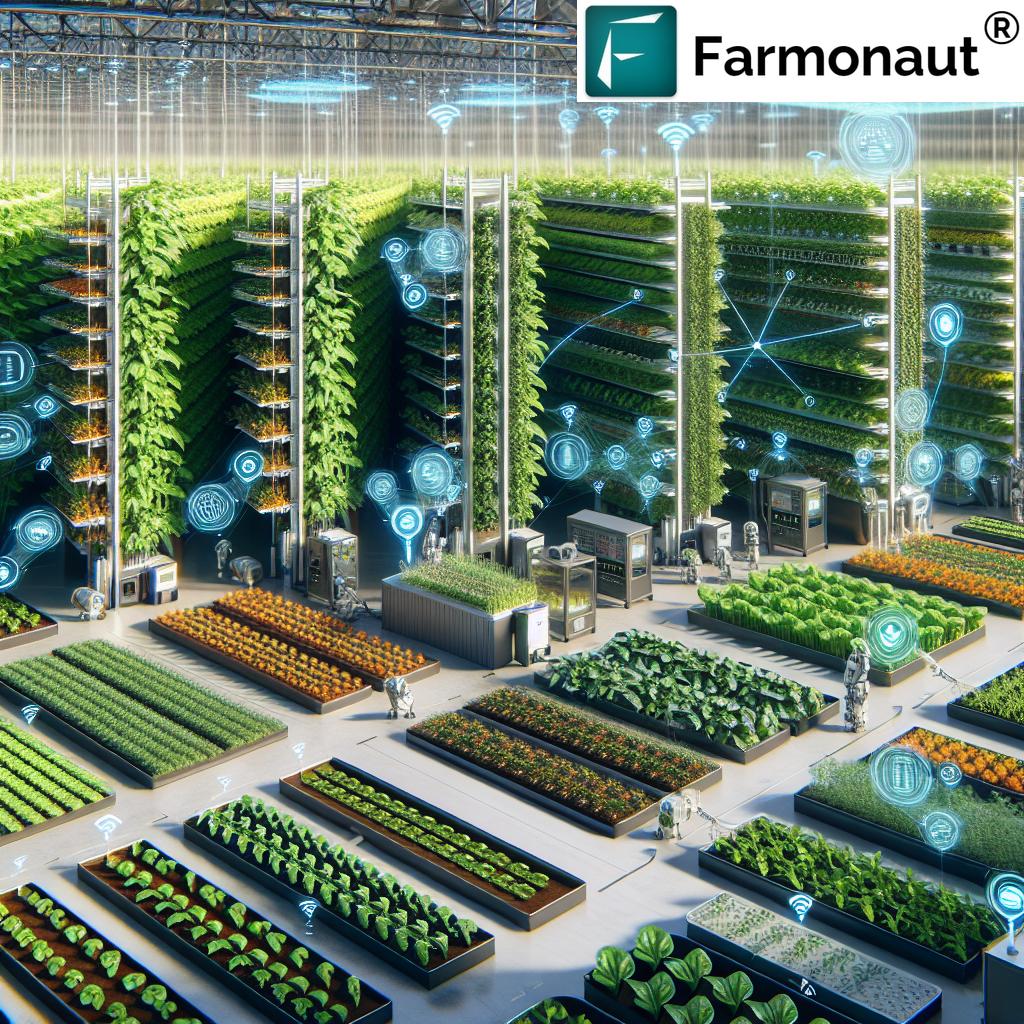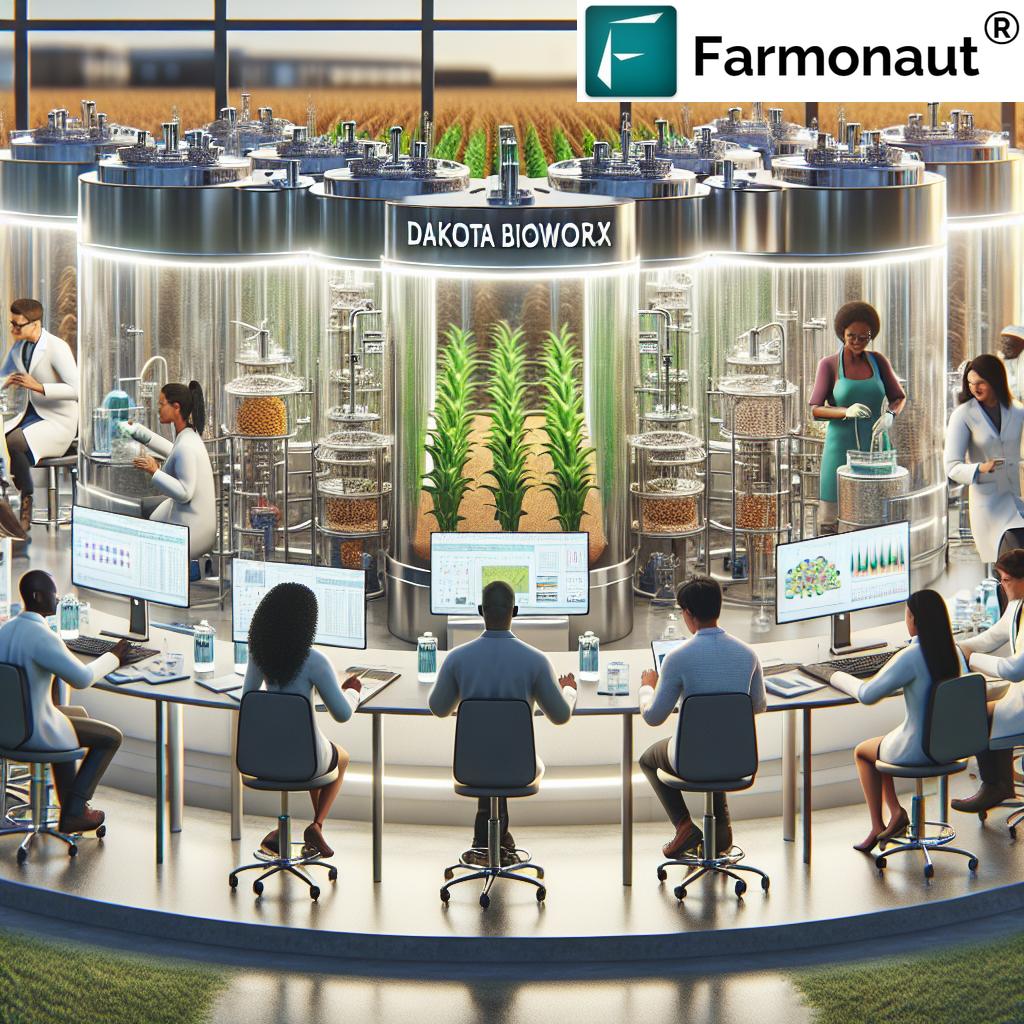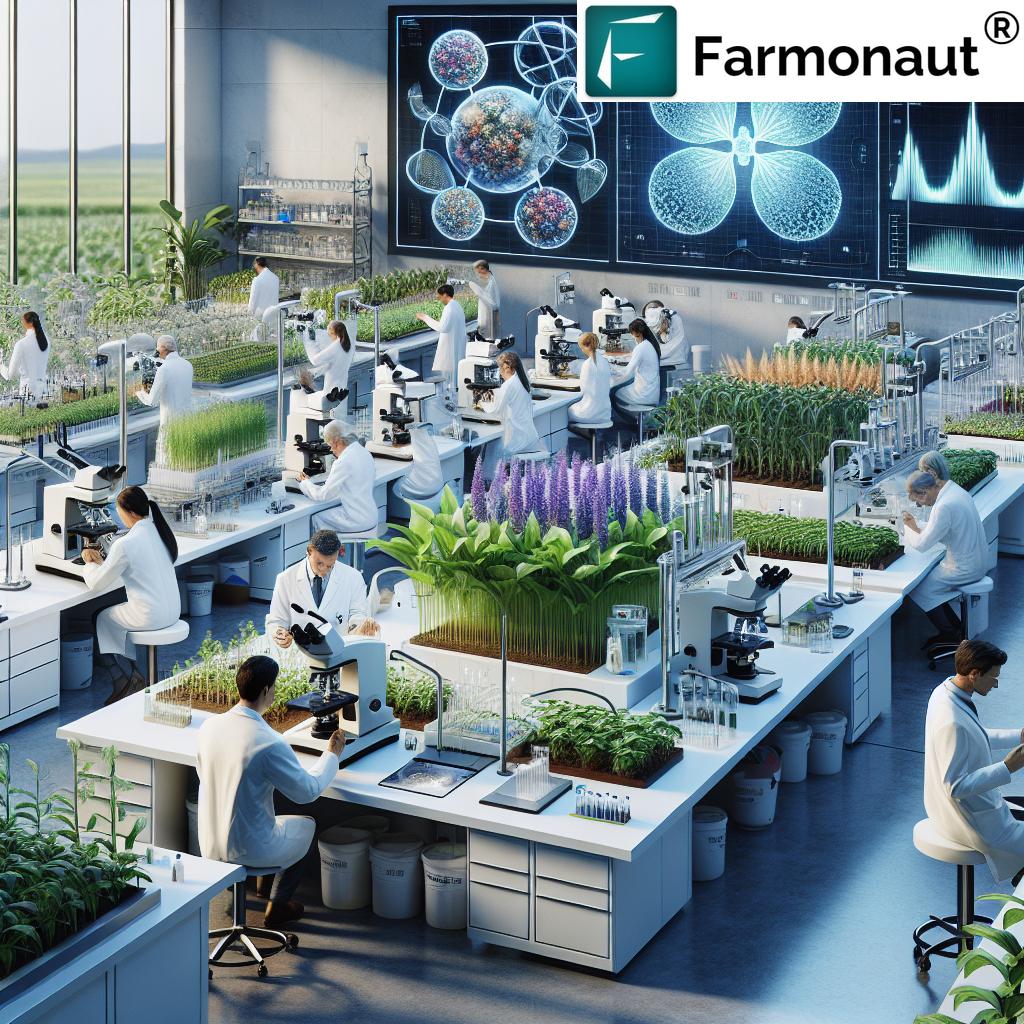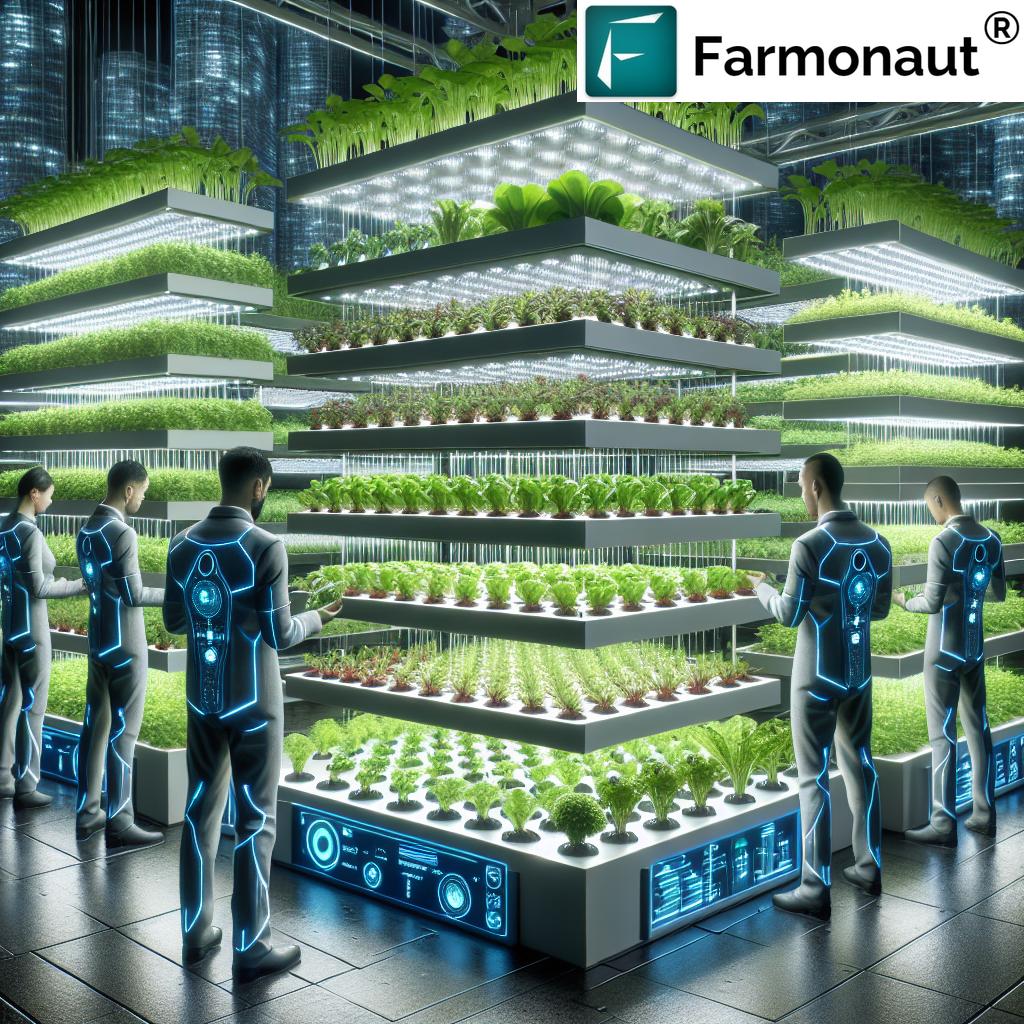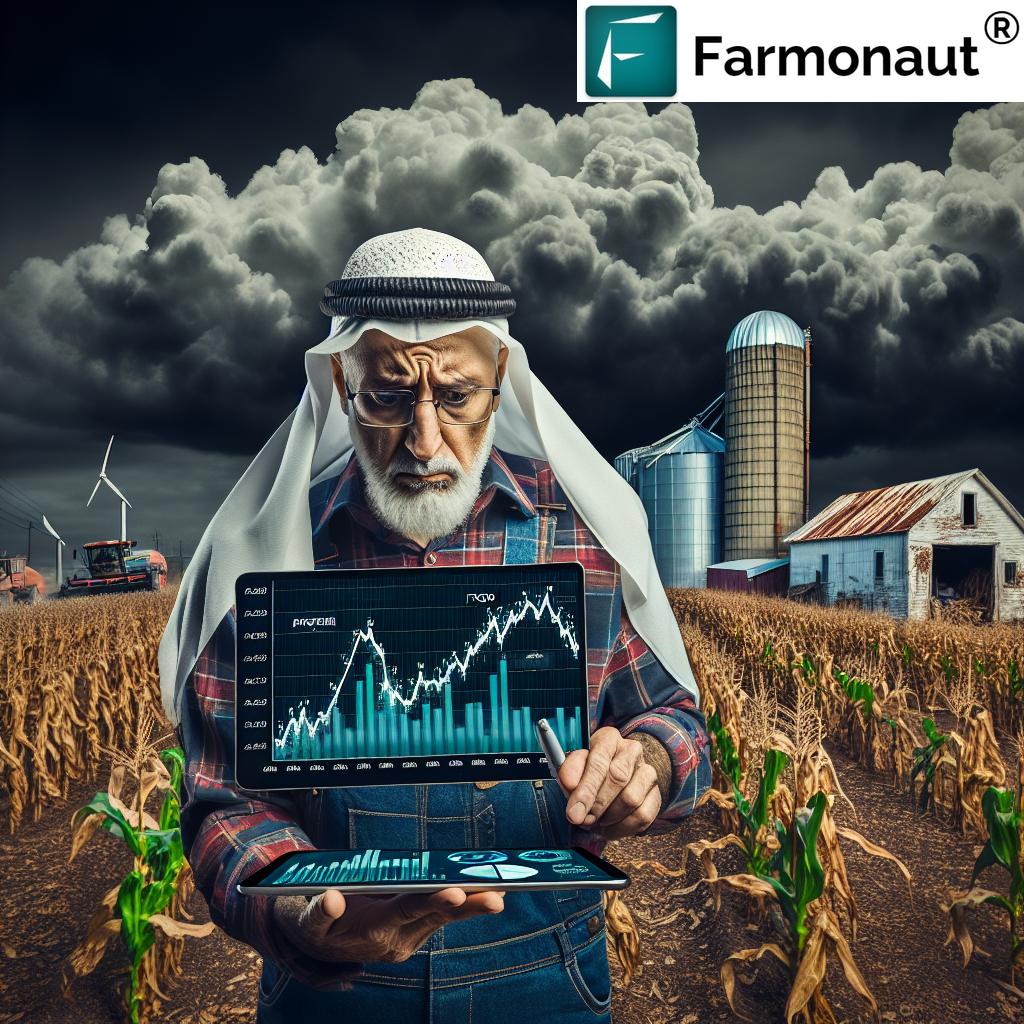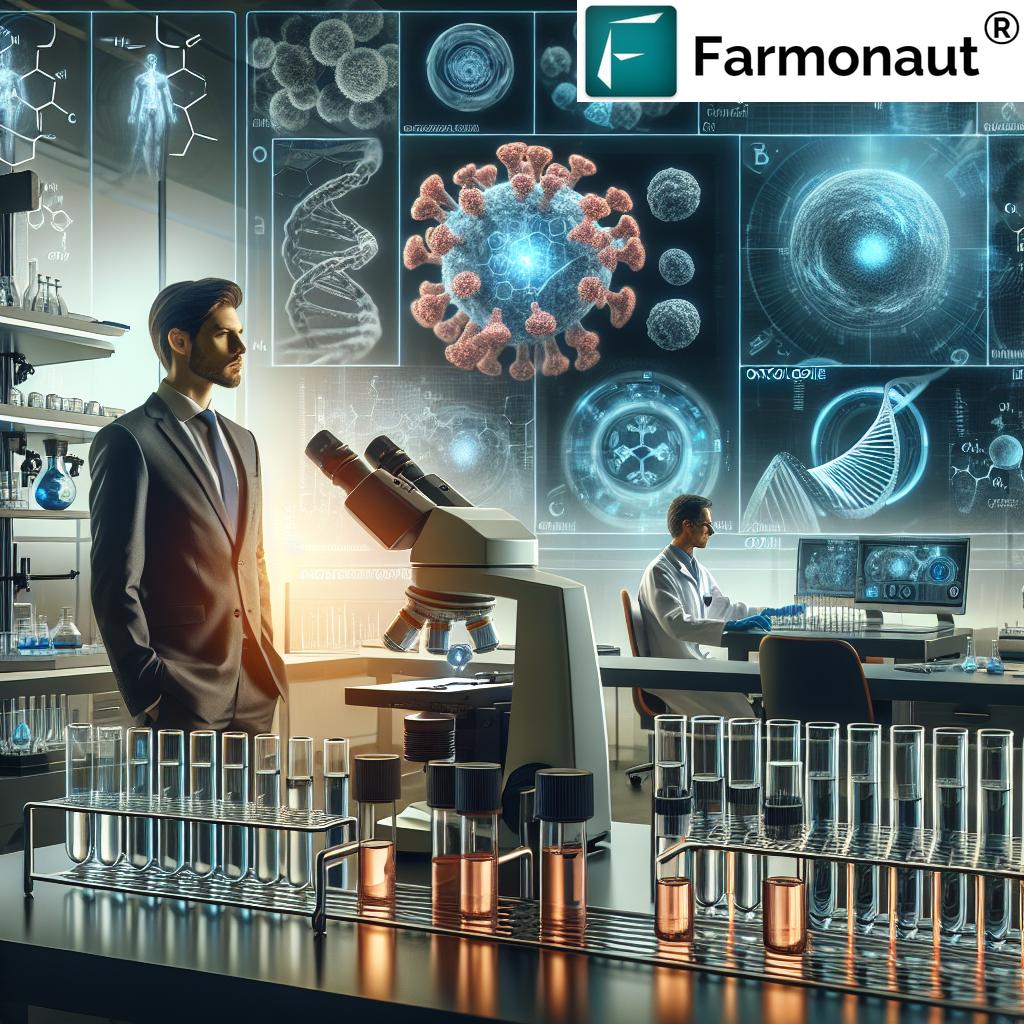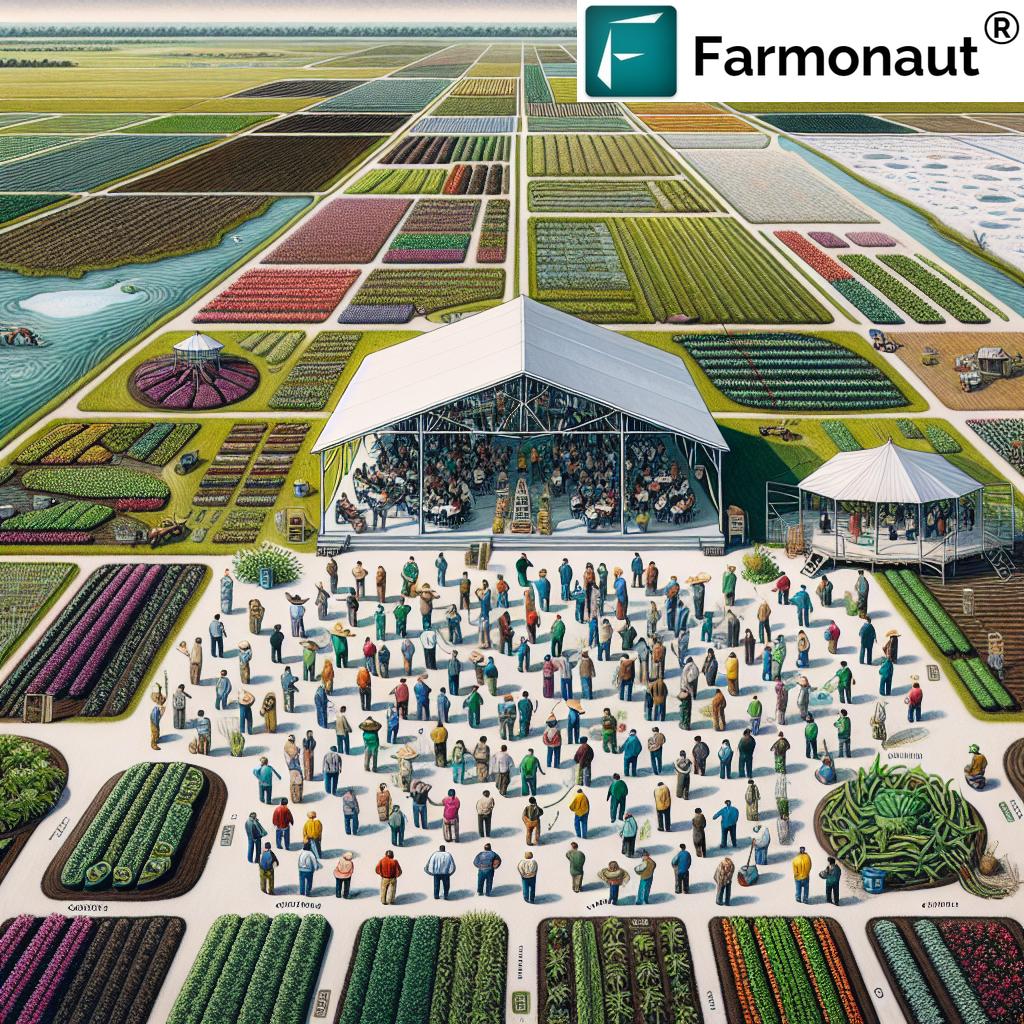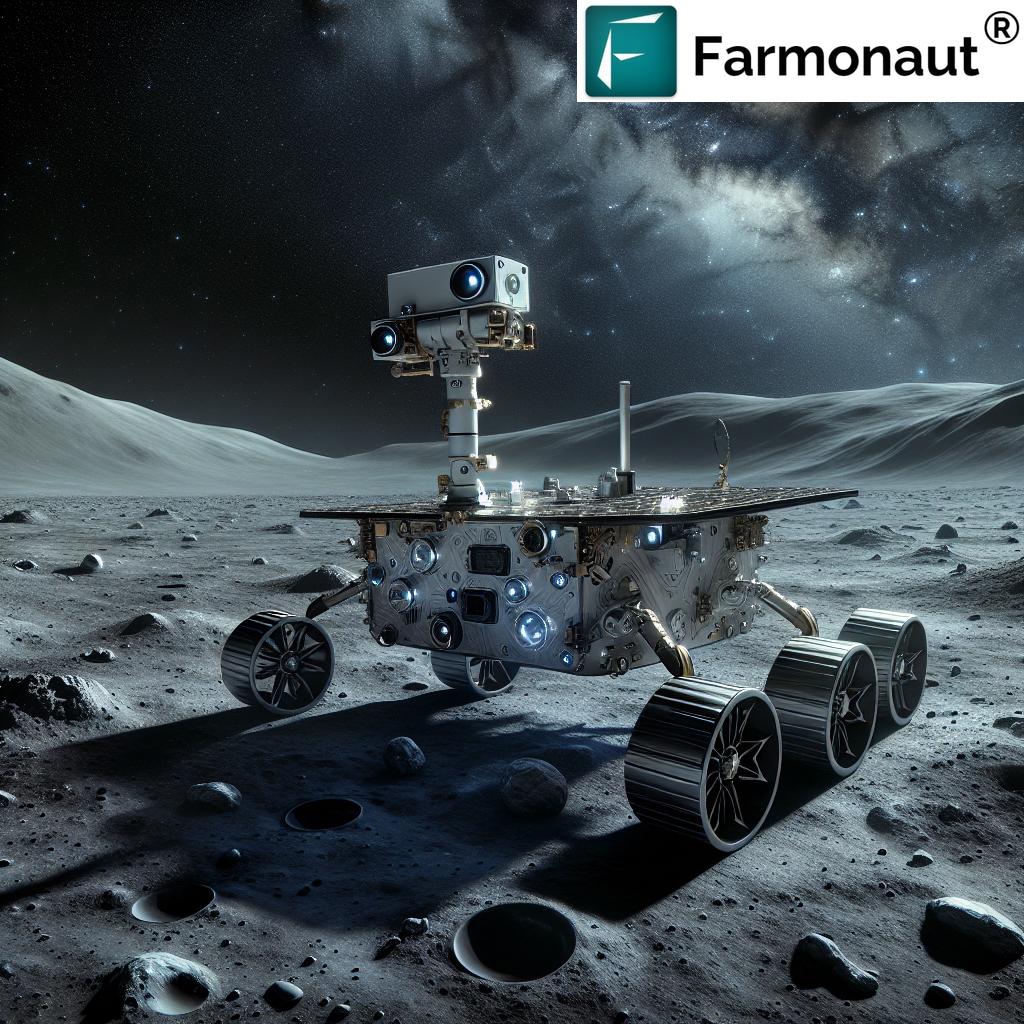- Introduction: Smart Harvest Market 2024 – AI Breakthroughs Revealed!
- What Is Smart Harvest Technology?
- Trivia: Smart Harvest Market Projections
- The Evolution of Agricultural Automation
- Core Components of Smart Harvesting Systems
- Smart Harvest Market Dynamics
- Smart Harvest Market Segmentation
- Comparison Table: Key Smart Harvest Technologies and Their 2024 AI Advancements
- Integration of Artificial Intelligence in Agriculture
- Internet of Things (IoT) and Sensor Applications in Crop Harvesting
- Major Regional Insights: North America, Europe, Asia-Pacific
- Media Section (Images/Youtube Videos/Farmonaut Platform Links)
- How Farmonaut Powers Smart Harvesting and Sustainable Farming
- Opportunities and Future Growth Projections
- Trivia: Agricultural Automation Trends
- Addressing Smart Harvest Challenges
- Frequently Asked Questions (FAQ)
- Farmonaut Subscription Options
- Conclusion: The Future of Smart Harvesting in Agriculture
Smart Harvest Market 2024: AI Breakthroughs Revealed!
Smart Harvest Market: Revolutionizing Agriculture with Advanced Technology
The global agriculture sector is amid a transformative revolution, driven by smart harvest technology, intelligent automation, and the widespread adoption of AI in agriculture. As our world confronts rising food demand, challenging labor shortages, and a pressing need for sustainable farming practices, smart harvesting technologies are setting new benchmarks in efficiency, productivity, and sustainability. In this comprehensive article, we delve into the market dynamics, innovations, and future growth that define the smart harvest market in 2024.
“By 2024, the smart harvest market is projected to reach $18.5 billion, driven by rapid AI integration.”
What Is Smart Harvest Technology?
At its core, smart harvest technology involves the integration of robotics, sensors, Internet of Things (IoT) devices, and artificial intelligence (AI) to automate the crop harvesting process. These solutions enable farmers to reduce manual labor dependency, increase yields, minimize post-harvest loss, and optimize resources.
- Robotic Harvesters: AI-enabled machines that pick, sort, and process crops with precision.
- Sensors & IoT Devices: Monitor field conditions, crop maturity, and provide real-time data for operational optimization.
- Crop Harvesting Drones: Aerial robots that assess crop health and support timely harvest decisions.
- Automated Guided Vehicles (AGVs): Transport harvested crops from field to processing facilities, streamlining logistics.
These components form the backbone of emerging precision agriculture systems, reimagining modern farming for efficiency and sustainable impact.
Trivia: Smart Harvest Market Projections
“Over 60% of new agricultural automation solutions in 2024 will feature advanced machine learning algorithms.”
The Evolution of Agricultural Automation
The journey of agricultural automation has evolved from basic mechanization—tractors, harvesters, plows—to today’s sophisticated smart farming solutions. The exponential growth in technology now enables us to automate labor-intensive tasks, making operations scalable, more efficient, and sustainable. As we embrace autonomous crop harvesting, we’re witnessing rapidly shifting farming practices:
- Reduction in Manual Labor: Addressing labor shortages across regions by deploying robotics and AI-driven robots.
- Higher Yields & Quality: Advanced algorithms and vision systems identify optimal harvest timing, enhancing food quality and minimizing loss.
- Cost Reduction: Automated vehicles and drones reduce operational costs by boosting productivity and lowering error rates.
- Sustainability Focus: Sensors and IoT help optimize resource use (water, fertilizer), aligning with sustainable farming practices.
- AI-Backed Decisions: Big data and AI-powered insights guide farmers toward data-driven decisions, optimizing every process from seed to harvest.
Through innovation and integration of emerging technologies, smart harvesting has become a central theme in agrotech, setting a new standard for the global agriculture market.
Core Components of Smart Harvesting Systems
Smart harvesting is successful when intelligent technologies are aligned and integrated. The key components are as follows:
- Robotic Harvesters: Autonomous harvesters equipped with high-resolution cameras, AI-driven vision systems, and sophisticated algorithms to identify, pick, and sort crops with minimal loss. Their automation level is typically high, leading to significant yield improvements in delicate crops like berries, tomatoes, and apples.
- IoT Sensors: Agricultural IoT devices monitor field conditions (soil, moisture, nutrient levels, weather) and provide insights that enable efficient and timely harvest operations.
- Drones: Crop harvesting drones are used for aerial monitoring, health assessments, and even spray applications, allowing real-time resource optimization and post-harvest processing logistics.
- Automated Guided Vehicles (AGVs): AGVs transport harvested produce from field to processing areas, contributing to process automation and scalable logistics.
- Data Management Systems: Secure systems for processing, analyzing, and storing large volumes of data generated by sensors, drones, and robots. These are integrated with AI-based advisory systems to maximize actionable insights.
Smart Harvest Market Dynamics: Growth Drivers & Challenges
Key Growth Drivers
- Labor Shortages: The escalating shortage of agricultural labor is catalyzing the adoption of automation and robotic harvesters across major markets.
- Rising Global Food Demand: With the global population projected to cross 8.5 billion by 2030, the need for increased food production is driving investment in smart technology.
- Tech Advancements: Breakthroughs in AI, sensors, IoT, and data analytics have made smart harvesting systems more robust and affordable, especially in Europe and North America.
- Sustainability Imperatives: Pressure for eco-friendly farming is accelerating the integration of sensor-driven and AI-based management systems, ensuring resource optimization and reduced waste.
- Government Support: Incentives, subsidies, and favorable policies in leading regions (e.g., the European Union, the United States) are encouraging the rapid adoption of smart farming solutions.
- AI Adoption: The rising adoption of AI in agriculture is driving precision and automation to new heights.
Key Challenges
- High Initial Investment: Substantial upfront costs make adoption difficult for small to medium farmers and enterprises.
- Technical Complexity: Integration and maintenance of advanced robotics and data-driven systems require skilled technical knowledge.
- Data Management: Handling, storing, and analyzing large datasets from multiple devices is a significant challenge.
- Regulatory Hurdles: Varying compliance and regulations in different regions slow down seamless scaling.
Smart Harvest Market Segmentation: Key Types and Regions
The smart harvest market is broad and includes various operation sites, product types, and regional markets.
By Site of Operation
- On-Field: Technologies used directly on agricultural fields for autonomous crop harvesting and real-time monitoring.
- Controlled Environment Agriculture (CEA): Solutions designed for greenhouses, indoor farms, and vertical farms – where the harvesting process happens in tightly managed conditions.
By Product Type
- Robotic Harvesters: AI-enabled robots and machines for precision crop picking.
- Self-Propelled Smart Harvesters: Multi-functional vehicles that intelligently automate and transport freshly harvested crops within operations.
By Region
- North America: Advanced farming landscapes, particularly in the USA and Canada, are pioneering smart harvest technology adoption.
- Europe: Germany, United Kingdom, and France are key leaders in the rollout of AI-powered agricultural automation.
- Asia-Pacific: Fast-growing, tech-adaptive markets seeking to close the productivity gap and address labor shortages with technology.
These segments form the foundation for understanding market drivers, trends, and opportunities across the global region.
Comparison Table: Key Smart Harvest Technologies and Their 2024 AI Advancements
| Technology Name | Automation Level | Primary Crop Applications | Estimated Yield Improvement (%) | Estimated Cost Savings (%) | Sustainability Impact | Notable 2024 AI Innovation |
|---|---|---|---|---|---|---|
| AI-Enabled Robotic Harvesters | High | Berries, Apples, Tomatoes | 35–40% | 30–35% | Labor/water use reduced by 35% | Deep learning for fruit ripeness and quality assessment |
| Drone-based Harvesting | Medium–High | Grapes, Cereals, Vegetables | 28–34% | 22–28% | Energy use reduced by 25%; improved pesticide targeting | AI-powered aerial imaging for crop readiness prediction |
| IoT Sensor Networks | Medium | Wheat, Rice, Soybeans | 18–24% | 15–20% | Water/energy/nutrient savings up to 30% | Predictive analytics with multispectral imagery |
| Automated Guided Vehicles (AGVs) | High | Tubers, Leafy Veggies | 22–28% | 18–24% | Logistics emissions reduced by 20% | AI route optimization for efficient logistics |
| Vision-Guided Harvesting Systems | Medium–High | Citrus, Peppers | 16–20% | 13–18% | Minimized crop loss by up to 15% | Object detection AI for selective picking |
Table: Key technologies shaping the smart harvest market in 2024, enabling higher yield improvements, cost savings, and robust sustainability outcomes.
Integration of Artificial Intelligence in Agriculture & Smart Harvesting
AI in agriculture stands at the forefront of the modern harvesting revolution. Advanced algorithms process thousands of data points from satellite imagery, sensors, and drones to drive actionable insights, improve resource allocation, and automate the harvesting process. Some breakthrough use cases include:
- Crop Recognition: Deep learning models identify crop types and maturity, enabling precise harvesting at the right time.
- Defect Detection: AI-powered imaging can detect crop diseases or physical defects, ensuring only top-quality produce is harvested.
- Resource Optimization: Predictive analytics analyze weather, soil, and water data for optimal irrigation and fertilizer scheduling.
- Yield Forecasting: AI assesses plant health and predicts crop yields for better planning and logistics.
AI-driven robotic harvesters are rapidly gaining traction in Europe and North America, with flexible deployment for various scales—from small farms to large estates. The strengths of such automation include:
- Round-the-Clock Operation: Robots and drones work continuously, unaffected by fatigue or adverse conditions.
- Agile Adaptation: Systems learn from data and adapt harvesting processes to new crop types or changing field conditions.
- Consistent Quality: Automation reduces human error and ensures consistent handling, sorting, and packaging.
IoT & Sensor Technologies in Crop Harvesting
The Internet of Things (IoT) is now central to precision agriculture systems. Agricultural IoT devices collect data from soil sensors, microclimate stations, and harvester robots to optimize every stage of farming and harvesting:
- Soil & Weather Monitoring: Multispectral and environmental sensors track moisture, nutrient levels, and weather shifts to ensure timely actions.
- Real-Time Alerts: Sensing platforms generate alerts for pest outbreaks, irrigation needs, or harvest timing.
- Fleet & Machinery Management: GPS-enabled IoT and vehicle management optimize AGV and equipment usage, saving labor and fuel.
- Resource Management: AI-integrated systems analyze combined IoT and satellite data for efficient water and fertilizer applications, directly linking to higher yields and improved sustainability.
These solutions greatly reduce resource wastage and environmental impact, echoing sustainable agriculture mandates globally.
Major Regional Insights: North America, Europe & Asia-Pacific
-
Europe: As a mature market, Europe leads in smart harvest technology adoption. The region’s policy support, digital infrastructure, and strong agri-tech culture have propelled growth. By 2023, Europe is projected to hold the largest market share globally.
(Source) -
North America: The smart harvest market in North America—especially in the United States and Canada—benefits from advanced agricultural practices, significant investment, and a strong research ecosystem. The region reached an impressive $1.24 billion value in 2022.
(Source) -
Asia-Pacific: Asia-Pacific hosts rapidly expanding emerging markets with a keen focus on technology adoption. While infrastructure gaps remain, increased need for food production and labor efficiency are pushing investments in smart harvest technology to new highs.
(Source)
Media Spotlight: Images, Videos & Farmonaut Platform Links
Leverage Farmonaut’s robust Satellite & Weather API for real-time data integration in your own agri systems. Read our API documentation for seamless integration.
How Farmonaut Powers Smart Harvesting & Sustainable Agriculture
As a pioneering agricultural technology provider, Farmonaut plays an integral role in supporting the global smart harvest market by making precision agriculture more affordable and accessible for farmers, agribusinesses, and institutions worldwide. Here’s how we achieve this:
- Satellite-Based Crop Health Monitoring: Farmonaut utilizes cutting-edge multispectral satellite imagery to monitor crop health, soil moisture, and vital crop metrics. This data assists farmers in timely harvesting, pest management, and optimal resource use, all while boosting yields and minimizing losses.
- Jeevn AI Advisory System: Our AI-driven advisory tools deliver personalized crop management strategies, real-time alerts, and weather forecasts to support smart decision-making in farming.
- Blockchain-Based Product Traceability: We empower traceability from farm to table using blockchain, ensuring every stage of product movement is transparent and verifiable for all stakeholders. Learn how traceability technology supports quality assurance and food safety.
- Fleet & Resource Management: Our fleet management solutions let agribusinesses optimize logistics, track field vehicles, reduce operational costs, and guarantee the efficiency of autonomous agricultural equipment. Discover the advantages in our Fleet Management product overview.
- Carbon Footprinting: We help users measure and reduce their environmental impact. Learn more about carbon footprint tracking for sustainable farming practices.
- Access to Finance: By enabling satellite-based crop verification, Farmonaut streamlines the crop loan and insurance process. Banks and insurers can assess areas and risks more efficiently. Read our solution for crop loan and insurance verification.
- Large-Scale Farm & Plantation Advisory: Our system is designed for diverse needs, from smallholder plots to extensive crop plantations and forest areas. Experience our large-scale farm management app.
Farmonaut’s value proposition: Cost-effective, data-driven, and sustainable smart harvest solutions for scalable, resource-efficient, and transparent agricultural operations worldwide.
Opportunities & Future Growth Projections in the Smart Harvest Market
The future of the smart harvest market is bright and advancing rapidly, with projected values soaring from $4.17 billion in 2022 to $7.74 billion by 2028 (10.5% CAGR). These are key opportunities on the horizon:
- Continuous Innovation: Robotics, AI, and IoT will see ongoing advancements, enabling autonomous machines with higher dexterity and adaptability.
- Market Expansion: Asia-Pacific and other emerging regions are primed for exponential adoption as awareness and accessibility improve.
- Data-Driven Collaboration: The focus will be on platform integration between farmers, research, and tech providers, further optimizing harvesting processes.
- Sustainability Initiatives: Sustainable farming practices will increasingly drive investment in resource optimization and green technologies.
- Lower Barriers to Entry: Subscription models, affordable apps, and API-based solutions (see Farmonaut App and API) are democratizing access for farmers of all scales.
We expect autonomous crop harvesting to soon become standard practice, particularly as regulations evolve and technology matures.
Trivia: Agricultural Automation Trends
“Over 60% of new agricultural automation solutions in 2024 will feature advanced machine learning algorithms.”
Addressing Smart Harvest Market Challenges
While smart harvesting presents immense opportunities, we must also be mindful of the ongoing challenges. Here’s how the industry, including platforms like Farmonaut, is addressing key obstacles:
- Reducing Initial Investment: Alternatives to heavy machinery, such as satellite-based analytics and API subscription models, lower entry costs for farmers.
- Simplifying Technical Complexity: Plug-and-play IoT devices, intuitive mobile apps, and AI-driven recommendations are making advanced technology more user-friendly.
- Solving Data Management: Secure cloud-based data management platforms (like Farmonaut), coupled with AI advisory, ensure actionable insights without overwhelming users.
- Responding to Regional Regulations: Modular software solutions can be adapted to fit local guidelines and reporting needs.
- Combating Labor Shortages: Rapid adoption of robotic harvesters and automation helps reduce our dependency on seasonal/manual labor, especially in regions with persistent shortages.
Frequently Asked Questions (FAQ): Smart Harvest Technology & Market
What is smart harvesting in agriculture?
Smart harvesting is the use of advanced technologies—like robotic harvesters, AI, sensors, and IoT—to automate the crop harvesting process. These systems improve efficiency, maximize yield, lower costs, and support sustainable farming practices.
How does AI improve smart harvest technology?
AI in agriculture analyzes field data, predicts crop maturity, optimizes harvest timing, and enables robotic systems to selectively pick and sort produce with high precision, reducing waste and improving quality.
What are the benefits of adopting agricultural automation for farmers?
Farmers benefit from increased productivity, reduced labor costs, more accurate and timely harvests, better use of resources, enhanced crop quality, and improved compliance with sustainability standards.
Are smart harvest solutions affordable for small farms?
Yes. Subscription-based models (like Farmonaut’s), satellite analytics, and affordable IoT devices are lowering the barrier to adoption, making smart farming accessible to smallholder and medium-sized farms.
How do I get started with Farmonaut’s smart harvesting solutions?
Simply download the Farmonaut App for mobile or web, or explore integration options with our API.
Farmonaut Subscription Options
Benefit from accessible, flexible pricing for farmers, agribusinesses, and enterprises. Choose what works for your operation and upgrade seamlessly as you grow:
Conclusion: The Future of Smart Harvesting in Agriculture
The smart harvest market is reshaping agriculture through advanced technologies, AI integration, and automation. As we stride toward sustainable food production, precision agriculture systems—powered by robotic harvesters, sensors, and drones—will continue to enhance productivity, reduce costs, and minimize environmental impact.
Farmonaut is committed to making these innovations accessible, affordable, and impactful: empowering every farmer and agribusiness to thrive using data-driven, transparent, and efficient smart farming solutions. Together, we unlock opportunities to meet growing food demand, ensure food security, and build a more resilient and sustainable future for global agriculture.
Explore, adopt, and innovate—our harvest is only as smart as the technology we deploy.



